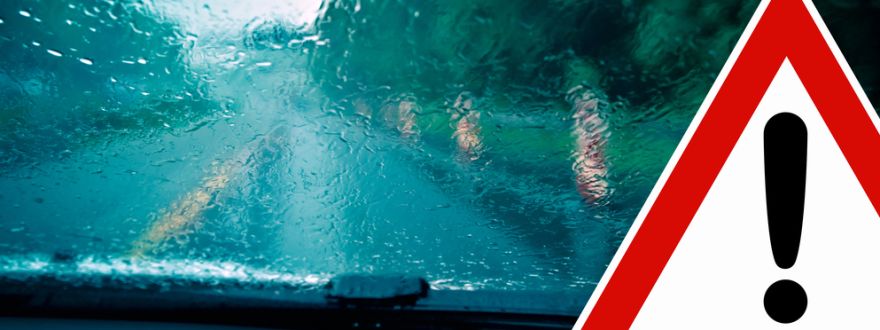
When bad weather sets in, it’s totally understandable if you want to put on your comfy clothes and snuggle in with a good book or movie while the storm rages. However, sometimes, there are errands to run and jobs to go to. It never hurts to have a refresher on how to stay safe when driving in heavy rain and or icy roads, right? Especially considering that Texans in the Gulf Coast area are NOT used to icy roads... rain, we get that.
So, let’s dive into what you should know before pulling out of your driveway.
Some basic road safety math
When it comes to dealing with heavy water, in particular, it’s always tempting to want to simply drive through “a little bit of water” on the road. However, your tires are filled with air, which turns them into flotation supports. As little as 2 inches of water is enough to make your car immobile, as it will no longer be making contact with the road!
The other component of road safety math is stopping distance! Ice is common at intersections and other stopping points on the road since the slower tire speed takes longer to break down the ice. On ice, it takes 3 times the stopping distance than it normally would to stop properly. So, leave extra space when slowing to a stop.
Check your fluids and your emergency kit
Before heading out in heavy rain or icy conditions, ensure that your car is topped up on all of its under-the-hood fluids. This includes windshield washer fluid and gas. Vehicles low on gas will not start as easily in bad weather as cars with full tanks!
While most Texan drivers have emergency kits in their vehicles, it’s very normal to put them in place and then not think about them again. However, an emergency kit without functioning batteries, is useless, as is a kit with expired or broken flares. Make sure that your emergency kit is properly stocked and everything is functioning properly!
Leave time and space
When driving in any kind of bad weather, focus on safety in terms of time and space. Allow extra time to get to the place you are going to, even if it means leaving earlier than is comfortable. There’s nothing worse than running late and having poor driving conditions as an added stressor. This can also lead to the tendency to take risks on water-covered or ice-covered roads when you really shouldn’t.
The other detail is to leave literal space between you and those around you. Even if it isn’t icy, bad weather and extra standing water can still lead to poor visibility, slower drivers, and other changes in traffic patterns. Leave space when following someone. Give those drivers ahead of you the benefit of the doubt if they are extra cautious when turning or they are driving slower than you would.
Keeping safe on the roads is about understanding that nature is in control and you should do everything in your power to work with it, instead of fighting it. At the end of the day, your safety -- as well as that of your property -- is the priority, right?
If you have questions about your auto insurance policy and want to make sure you are properly ensured, contact Harbour Insurance Services at (281) 520-4090 and let us help you!





